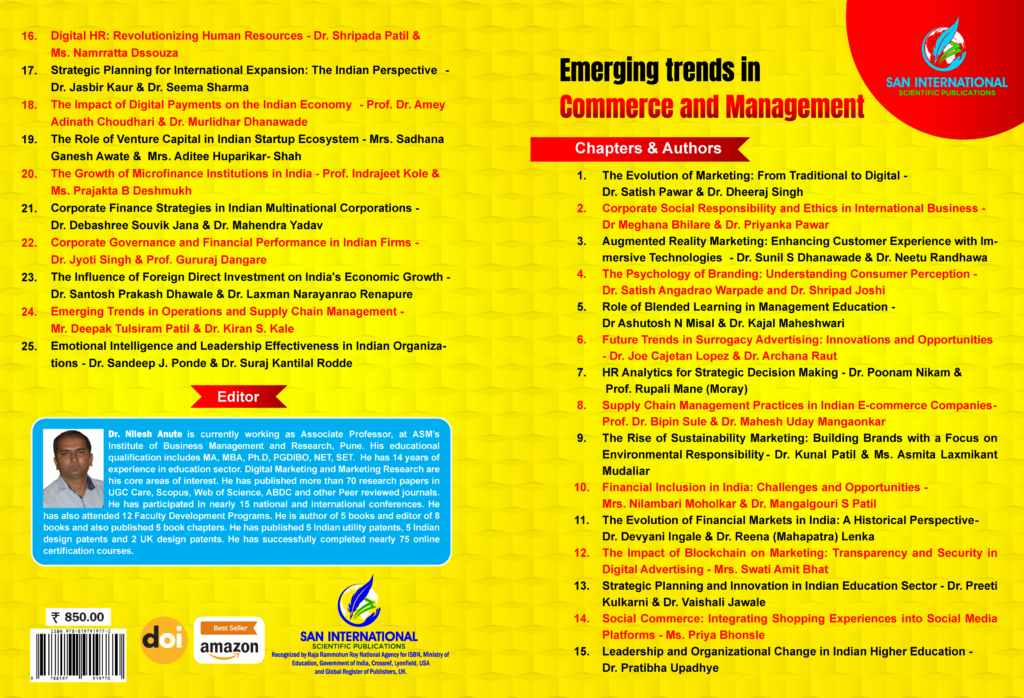Book Title: Emerging Trends in Commerce and Management
Editor: Dr. Nilesh Anute
ISBN: 978-81-979197-7-0
Chapter: 5
DOI: https://doi.org/10.59646/emc5/255
Authors:
Dr. Ashutosh N Misal, Professor, Indira Institute of Management, Pune, Maharashtra, India.
Dr. Kajal Maheshwari, Associate Professor, S. B. Patil Institute of Management, Pune, Maharashtra, India.
Learning Objectives
Blended learning, a pedagogical model that integrates conventional in-person classroom teaching with online learning activities, has emerged as a revolutionary influence in management education. This method combines the advantages of face-to-face and online forms to establish a dynamic and adaptable learning setting. Throughout history, the field of management education has progressed from traditional lecture-based formats to include more interactive and technology-driven approaches. This evolution has been motivated by the desire to increase student involvement and adjust to the evolving educational environment. The theoretical underpinnings of blended learning are based on constructivist theories, which prioritise active and student-centered learning. Blended learning encompasses a combination of synchronous activities, which occur in real-time, and asynchronous activities, which are self-paced. It also involves utilising varied instructional approaches and integrating multimedia materials. There are other approaches available, such as the flipped classroom, in which students initially learn new subject online and then put their knowledge into practice in the classroom. Blended learning in management education offers numerous advantages. Case studies from reputable schools provide proof of successful implementation of blended learning, showcasing improved student happiness and academic achievement. Technology is essential in enabling blended learning by offering platforms for communication, collaboration, and information delivery. Effective pedagogical strategies for blended learning involve meticulous planning and designing of both online and offline activities to guarantee coherence.
References
- Anute N, Patil H (2023) Significance Of Distance Education And E Learning In Higher Education System In India, The Online Journal of Distance Education and e-Learning, Volume 11, Issue 1, Page no. 324-337.
- L´opez-P´ erez, M. V., P´ erez-L´opez, M. C., Rodríguez-Ariza, L., & Argente-Linares, E. (2013). The influence of the use of technology on student outcomes in a blended learning context. Educational Technology Research & Development, 61(4), 625–638. https://doi.org/10.1007/S11423-013-9303-8
- Mariam, S., Khawaja, K. F., Qaisar, M. N., & Ahmad, F. (2023). Blended learning sustainability in business schools: Role of quality of online teaching and immersive learning experience. International Journal of Management in Education, 21(2), Article 100776.

